This article was medically reviewed by Luba Lee, FNP-BC, MS. Luba Lee, FNP-BC is a Board-Certified Family Nurse Practitioner (FNP) and educator in Tennessee with over a decade of clinical experience. Luba has certifications in Pediatric Advanced Life Support (PALS), Emergency Medicine, Advanced Cardiac Life Support (ACLS), Team Building, and Critical Care Nursing. She received her Master of Science in Nursing (MSN) from the University of Tennessee in 2006.
This article has been viewed 1,837,238 times.
Swollen fingers may result from an injury or from edema, a common medical condition that causes excess fluid to be stored in various locations of the body, including the hands, feet, ankles and legs. Edema may be caused by pregnancy, consuming too much sodium, medications or specific medical conditions, such kidney issues, lymphatic system complications or congestive heart failure. Here are some suggestions for reducing swollen fingers.
Steps
Diagnosing Your Swelling
-
1Evaluate your diet and sodium intake. Eating too many salty foods may cause your fingers to swell. Some of the foods that are highest in sodium include highly processed foods, such as:[1]
- Canned soups
- Deli meats
- Frozen pizza
- Soy sauce
- Cottage cheese
- Olives
-
2Identify any injuries that could have caused the swelling. Injury is one of the most common culprits. Liquids such as blood accumulate in the affected area, causing swelling. Treat an injury first by applying cold (this will constrict the blood vessels), then by applying heat.[2] (this will help flush out the fluids).
- If your bruise or injury lasts longer than 2 weeks, symptoms get more severe or frequent, or signs of skin infection develop, talk to your doctor immediately.
Advertisement -
3Determine if you may have had an allergic reaction. When your body encounters something that it's allergic to, it released histamines into your bloodstream.[3] In order to reduce the swelling, you can take antihistamines. If you experience severe difficulty in breathing after an allergic reaction, consult a doctor immediately.
-
4Check your weight to see if obesity may be causing the swelling. Obesity causes the body's lymphatic system to slow down, resulting in edema in the hands and feet. Talk with a doctor or dietician to come up with a weight-loss plan if you believe your swelling may be the result of obesity.
-
5Tell your doctor if you think you might have an infection. Your hands might be experiencing carpal tunnel syndrome or cellulitis, for example. Some bacterial infections that affect the hands get into the blood stream and lymph nodes, so it's important to talk to your doctor if you suspect any infection.
Understanding Treatment Options
-
1Exercise your swollen finger(s). Move your fingers around pump excess fluid back to the heart. Motion causes blood flow to the area, which stimulates the pressure necessary to pump excess fluids away. Exercises may be as simple as typing at a keyboard, flexing your fingers or using your hands to get dressed or fix breakfast. Any movement of your fingers will reduce swelling.
- If you don't have time for traditional exercise, think about a quick 15-minute walk once a day. Walking just 10 to 15 minutes is a great way to increase circulation throughout your body. Swing or move your hands up and down while you walk.
- People who suffer from obesity are more prone to edema because the lymphatic system works slower. Swelling may diminish if the lymphatic system kicks in again. Exercising more often, planning out a healthy diet of fruits, vegetables and protein, and drinking more water may assist the body in getting the lymphatic system running to its full potential.
-
2Elevate your hands and fingers. Swelling can be caused by poor circulation or blood that stagnates in your hands. Elevating your hands will help any accumulated blood flow back down to the body.
- Raise your swollen fingers above your heart for 30 minutes at least 3 or 4 times per day to treat severe edema. Doctors also recommend elevating your hands above your heart when sleeping.
- Keep your hands and fingers elevated for a short period of time to alleviate minor swelling.
- Try raising your hands up above your head, interlocking them, and bringing them down behind your head. Move your head back and create a little bit of resistance. After 30 seconds, release your hands, shake them out, and repeat process multiple times.
-
3Rub your swollen fingers. Massage the tissues in the swollen fingers toward your heart. Use strong, firm rubbing motions. A hand massage will stimulate the muscles and blood flow to your fingers, which will help push out the excess fluid that causes your fingers to swell.
- Consider getting a professional hand and foot massage. Hand and foot massages can be very affordable.
- Give yourself a hand massage. Using the thumb and forefinger of one hand, clamp lightly but securely onto the opposite hand. Run your thumb and forefinger from the base of the palm to the end of a finger. Repeat for each finger, then switch hands.
-
4Wear compression gloves. Compression gloves apply pressure to your hands and fingers, which deters the collection of excess fluids.
-
5Limit salt in your diet. Salt causes your body to retain extra water and fluids, which may affect your fingers. By limiting your salt intake, you reduce the chances of retaining extra fluids. If you feel food is too bland with less salt, use other seasonings to flavor your foods.
-
6Maintain a moderate temperature in your home or office. A moderate temperature will encourage better circulation. Keep the temperature around you steady to reduce finger swelling that results from extreme temperature changes.
- Studies show that hot showers, baths and compresses increase swelling on affected body parts, including fingers. [4]
- Exposure to extremely cold temperatures may also increase swelling. If the swelling in your hands is caused by a bruise, moderate cold (such as an icepack wrapped in cloth) will reduce the swelling.
-
7Take medications. Diuretics often reduce fluid retention in patients who have edema and swelling. With medication prescribed by your doctor, the swelling in your fingers may be relieved.
Expert Q&A
Did you know you can get expert answers for this article?
Unlock expert answers by supporting wikiHow
-
QuestionWhat can I do to treat a swelling in my fingers from a swimming injury?
 Luba Lee, FNP-BC, MSLuba Lee, FNP-BC is a Board-Certified Family Nurse Practitioner (FNP) and educator in Tennessee with over a decade of clinical experience. Luba has certifications in Pediatric Advanced Life Support (PALS), Emergency Medicine, Advanced Cardiac Life Support (ACLS), Team Building, and Critical Care Nursing. She received her Master of Science in Nursing (MSN) from the University of Tennessee in 2006.
Luba Lee, FNP-BC, MSLuba Lee, FNP-BC is a Board-Certified Family Nurse Practitioner (FNP) and educator in Tennessee with over a decade of clinical experience. Luba has certifications in Pediatric Advanced Life Support (PALS), Emergency Medicine, Advanced Cardiac Life Support (ACLS), Team Building, and Critical Care Nursing. She received her Master of Science in Nursing (MSN) from the University of Tennessee in 2006.
Board-Certified Family Nurse Practitioner
-
QuestionHow do I get my rings off of my swollen finger?
 Luba Lee, FNP-BC, MSLuba Lee, FNP-BC is a Board-Certified Family Nurse Practitioner (FNP) and educator in Tennessee with over a decade of clinical experience. Luba has certifications in Pediatric Advanced Life Support (PALS), Emergency Medicine, Advanced Cardiac Life Support (ACLS), Team Building, and Critical Care Nursing. She received her Master of Science in Nursing (MSN) from the University of Tennessee in 2006.
Luba Lee, FNP-BC, MSLuba Lee, FNP-BC is a Board-Certified Family Nurse Practitioner (FNP) and educator in Tennessee with over a decade of clinical experience. Luba has certifications in Pediatric Advanced Life Support (PALS), Emergency Medicine, Advanced Cardiac Life Support (ACLS), Team Building, and Critical Care Nursing. She received her Master of Science in Nursing (MSN) from the University of Tennessee in 2006.
Board-Certified Family Nurse Practitioner
Warnings
- If prolonged swelling persists without relief or severe swelling is observed, contact your physician immediately. Severe or persistent edema can be a sign of a much more serious condition such as a tumor, heart failure or other medical issue that requires immediate attention.⧼thumbs_response⧽
- Pregnant women should always contact their physicians before starting any kind of medicine to reduce the effects of swelling in hands or fingers. Diuretics are not recommended for women who are pregnant.⧼thumbs_response⧽
Things You'll Need
- Compression gloves
- Diuretics
References
- ↑ https://www.medicaldaily.com/swollen-fingers-heres-how-prevent-it-242216
- ↑ http://firstaid.webmd.com/tc/bruises-and-blood-spots-under-the-skin-home-treatment
- ↑ http://www.webmd.com/allergies/guide/antihistamines-for-allergies
- ↑ http://www.emedicinehealth.com/bruises/article_em.htm
- ↑ Dr. Mark Rosenberg, http://www.youtube.com/watch?v=PbI0cyNDlW4
About This Article
To reduce swollen fingers, try doing simple finger exercises for 10 to 15 minutes each day and keep your fingers elevated as much as possible. You can also massage the tissues in your swollen fingers using strong, firm rubbing motions. Wearing compression gloves can prevent excess fluids from collecting in your fingers, and limiting your sodium intake can also help reduce swelling. For tips on understanding the underlying cause of the swelling, read on!

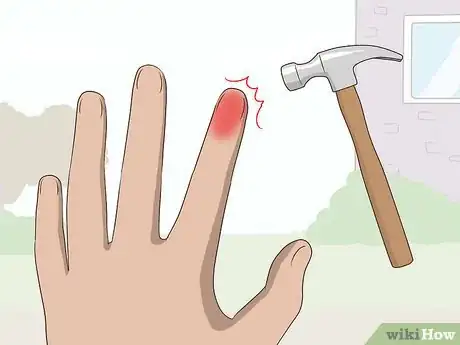
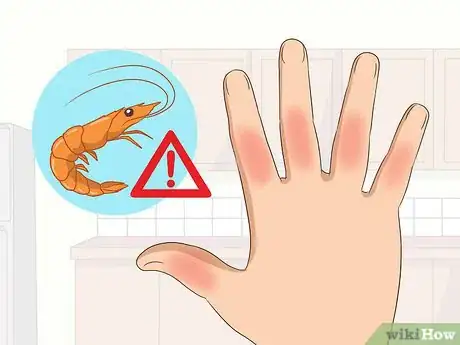
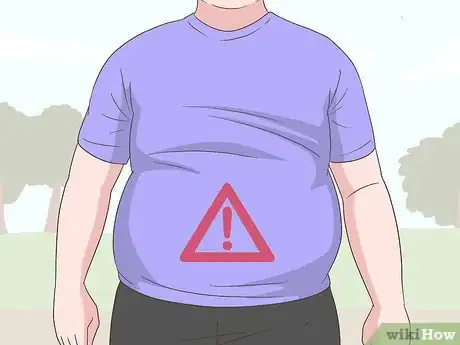

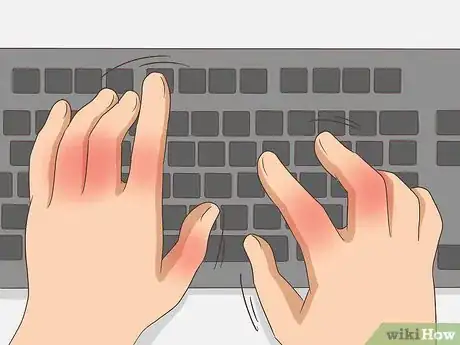
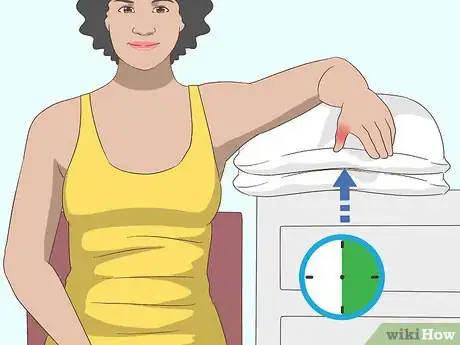
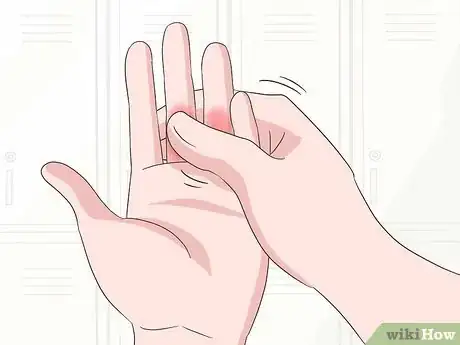


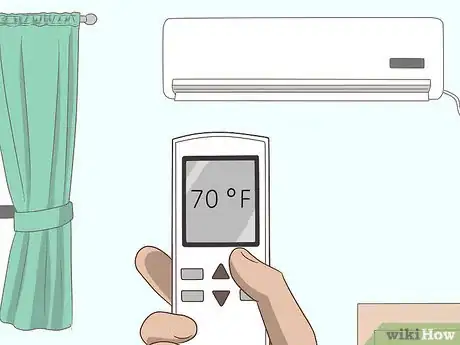


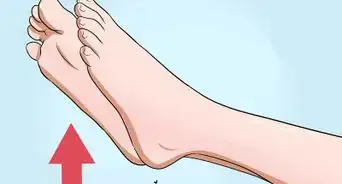

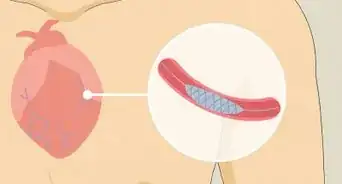

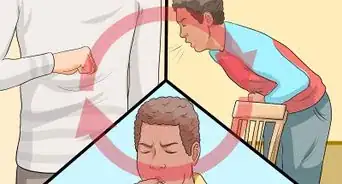




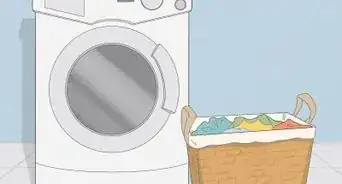













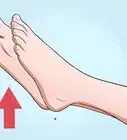






































Medical Disclaimer
The content of this article is not intended to be a substitute for professional medical advice, examination, diagnosis, or treatment. You should always contact your doctor or other qualified healthcare professional before starting, changing, or stopping any kind of health treatment.
Read More...